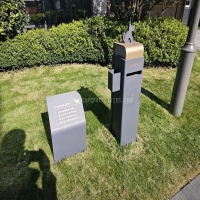Welcome to the website for landscape facilities products and knowledge.
How does the bin’s design ensure that it is easy to use for individuals with sensory sensitivities?
For individuals with sensory sensitivities, everyday objects like waste bins can pose unexpected challenges. Sensory-friendly bin designs prioritize accessibility by addressing common triggers such as noise, texture, and visual clutter. Here’s how these thoughtful features make bins easier to use:
1. Quiet Lid Mechanisms: Traditional bins often have loud, sudden-closing lids, which can be distressing. Sensory-friendly bins use soft-close hinges or dampened materials to minimize noise.
2. Smooth, Non-Abrasive Textures: Rough or sticky surfaces can cause discomfort. These bins are crafted from matte, smooth materials like silicone or coated plastic to reduce tactile sensitivities.
3. Neutral Colors and Minimalist Aesthetics: High-contrast or overly bright designs may overwhelm. Opting for muted tones and simple shapes helps create a calming visual experience.
4. Intuitive Foot Pedals or Touchless Sensors: Complicated mechanisms frustrate users. Foot-operated or motion-activated designs ensure effortless, predictable operation.
5. Sturdy, Wobble-Free Bases: Unstable bins can startle users. Weighted bottoms or anti-slip pads prevent tipping, fostering confidence during use.
By integrating these elements, sensory-friendly bins empower individuals with sensitivities to maintain independence while reducing stress. Such inclusive designs reflect a growing awareness of diverse needs in everyday products.
Related search:

Recommendation
Outdoor cat and dog feces trash can; Community pet trash can; Metal multi-color design